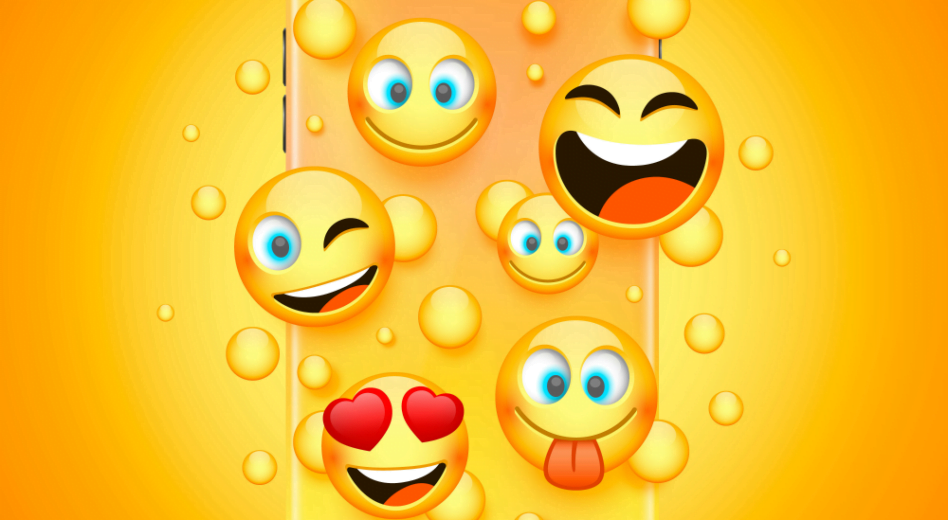Ensuring that a text message carries the right emotional tone by adding an emoji or a GIF (Graphic Interface Format) is a common choice these days. After all, who hasn’t experienced misunderstandings when words fall short, so why not make use of the fact that human beings have been learning to ‘read’ images since birth? The abundance of both GIFs and emoji testify not only to their popularity, but to the shifting nature of our long-distance communication with each other.
GIFs – brief, soundless loops of video – were first created 30 years ago, four years before the formation of the World Wide Web, during an era when computer use was paid for by the hour at centralized computers owned by companies such as CompuServe. Technically, a GIF was a revolutionary format utilizing a compression algorithm that allowed images to use less data storage space.* Today these twitchy little fragments of motion have edged closer to the very core of language, sometimes replacing words altogether.
GIFs and emoji both create endless translation challenges, even among different demographics in the same country. Often the question is very basic: what in the world does that even mean? There are translation tools online for both types of graphics, and also tools that will help individuals find or create their own pictorial punch lines just by stating the emotion they want to express. But clearly a GIF assembled from, say, a few seconds of a British tv show, might not speak clearly to colleagues or customers in Brazil.
On a programming level, different platforms might show an emoji as different forms, depending on devices and operating systems. Colors, shapes and expressions can all be completely different on the other end, making post-editing and testing phases of localization just that much more important.
And while emoji have some “composability,” meaning they can be built together into sentence-like structures of more complex meaning, GIFs display unique and specific scenes, making them less universal. Both provide those shades of the ineffable that we have traditionally referred to as the meaning “between the lines,” but for foreign markets, they must be chosen very carefully.
Speech-to-GIF apps are emerging, including a Face to GIF function that uses a camera to analyze facial expressions to create a GIF.** Whether such direct expressions of an individual’s intention will translate effectively to people of other age groups, much less countries, has to be considered on a case by case basis, because even the meaning of the most basic emoji is rarely understood globally at this point. What seems obvious is that people everywhere want to use this type of communication, and the ‘alphabet’ of emotional symbols is rapidly expanding.
Unicode (a computing industry standard for consistent coding and representation) will add 157 new emojis in 2018, and these will be available in the middle of the year on smartphones around the world. They are all shown here.
Like any other translation complexity, the use of symbols like GIFs and emoji for your global communication is an area of both possibility and risk that Skrivanek’s experts can handle for you. It’s a growing, lively aspect of language that businesses can’t afford to ignore, and in the right hands, it can bring an added dimension to your messages.
J. V. McShulskis
*smithsonianmag.com, June 2017, A Brief History of the GIF, by Lorraine Boissoneault
**Wired.com, August 2015, It’s Really, Really Hard to Turn Speech Into GIFs, by Molly McHugh
